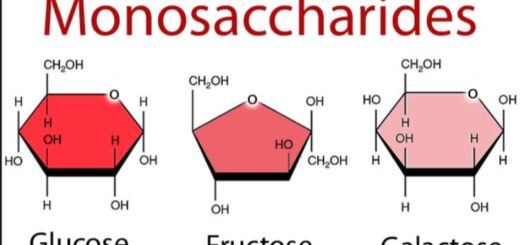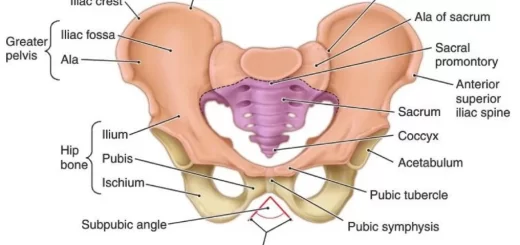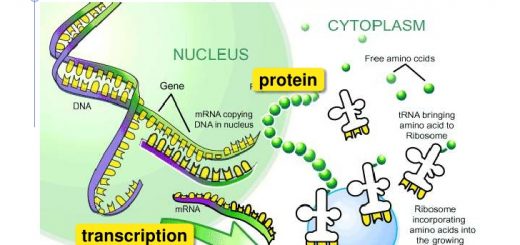Protein structure, Classification, properties of amino acids and Formation of peptide bonds
Proteins are organic nitrogenous substances composed of carbon, hydrogen, oxygen, and nitrogen. The building units of proteins are the amino acids, i.e. Proteins are polymers of naturally occurring 20 amino acids.
Amino acids
The amino acid is an organic acid, in which one hydrogen atom is replaced by an amino group (NH2). The amino group is usually attached to the α-carbon atom next to the -COOH group. All naturally occurring amino acids contain in common a central α-carbon atom to which a carboxylic group, an amino group, and a hydrogen atom are covalently bonded. In addition, the α-carbon atom binds a side chain group called R group which is distinctive for each amino acid.
Classification of amino acids
Proteins from all forms of life (plant, animal, or microbial contain only 20 naturally occurring amino acids; each amino acid has its specific tRNA in protein-synthesizing machinery and has a specific codon that exists in DNA genetic code, these naturally occurring amino acids are called primary or common amino acids. Amino acids can be classified as follows:
According to structure
1- Aliphatic amino acids having no ring structure:
A. Neutral:
- Glycine, alanine.
- Branched : valine, leucine, lsoleucine.
- Hydroxy-containing: Serine, threonine.
- Sulfur-containing: cysteine, methionine.
B. Acidic (monoamino-dicarboxylic)
- Aspartic acid.
- Glutamic acid.
C. Basic (diamino-monocarboxylic)
- Arginine.
- Lysine.
D. With side chains containing amide group:
- Asparagine.
- Glutamine.
2- Aromatic amino acids contain an aromatic ring (benzene or phenolic ring)
- Phenylalanine.
- Tyrosine.
3- Heterocyclic amino acids:
- Tryptophan.
- Histidine.
- Proline.
Tryptophan can be considered aromatic amino acid containing an indole ring. Basic amino acids beside lysine and arginine include histidine which contains an imidazole ring. Proline is considered an amino acid rather than an amino acid as it contains mine (NH) group. Arginine contains a guanidine group. Hydroxy-containing amino acids are serine, threonine, tyrosine. Proline and tryptophan contain a pyrrole ring.
According to isomerism
All amino acids show isomers as they contain asymmetric C atom in α-position with the exception of glycine so they are classified into:
- D-amino acids: With the NH2 group on the right of the asymmetric C atom.
- L-amino acids: with the NH2 group on the left of the asymmetric C atom.
According to the nutritional value (biological value)
A. Essential amino acids:
They are amino acids that can not be synthesized by the human body, so they must be taken in the diet, they are valine, leucine, isoleucine, phenylalanine, tryptophan, lysine, methionine, arginine histidine, and threonine, proteins that contain all the essential amino acids are of high biological value e.g. meat, milk and egg proteins.
Proteins that are deficient in one or more of the essential amino acids are of low biological value e.g. collagen and elastin are deficient in tryptophan and zein in maise is deficient in tryptophan and lysine.
B. Non-essential amino acids:
These are amino acids that can be synthesized in the body, and they include glycine, alanine, serine, cysteine, aspartic, asparagine glutamic, glutamine, tyrosine, and proline. Arginine and histidine are called semi-essential because they are formed in the body at a rate enough for adults but not for growing individuals.
The amino acids found in proteins but are not primary
After the synthesis of proteins, some of the amino acids are modified in post-translation processing, they are called derived or modified amino acids, e.g.:
- 4-hydroxyproline: this is an imino acid found in collagen formed by hydroxylation of proline.
- 5-hydroxylysine: this is found in collagen formed by hydroxylation of lysine.
- Cystine: It is formed by conjugation of 2 cysteine after oxidation, the two cysteine are near to each other or may be separated by many amino acids in the primary sequences of a polypeptide, or may even be located on two different polypeptide chains, this disulphide linkage is important to the stability of the three-dimensional shape of the protein.
Non-protein amino acids
These are amino acids that do not occur in protein and they have no genetic codes, but they perform other functions in human metabolism e.g.:
- β-Alanine is a component of CoA, carnosine and it is a catabolic product of some pyrimidine bases.
- γ-Aminobutyric acid (GABA) is a transmitter of nerve impulse in the brain and nerve tissues.
- Dopa (3,4-dihydroxyphenylalanine) is a precursor for melanin epinephrine and nor-epinephrine.
- 3-5-Dilodotyrosine: These are precursors for thyroid hormones (T3 and T4).
Properties of amino acids
Amphoteric properties: In solution, amino acids behave as acids and alkalis due to the presence of acidic group (-COOH) and basic group (-NH2), on complete ionization of neutral amino acids as dipolar ions (Zwitterions), they carry both negative and positive charges, which are equal, this explains the amphoteric property of amino acid, i.e. they can react with acids and bases.
The pH at which an amino acid carries an equal positive and negative charge (i.e.electrically neutral) is called its isoelectric point (IEP) or pl, when an electric current is passed in a medium where an amino acid occurs at its IEP, its ions do not migrate towards any of the electrodes. A zwitterion is the dipolar ion of an amino acid at its IEP in an aqueous medium.
Formation of peptide bonds
A peptide bond is formed between the amino group of one amino acid and the carboxylic group of another amino acid with the removal of water. A peptide consists of two or more amino acid residues linked by peptide bonds, peptide bond is a dehydration reaction. An amino acid unit in a peptide chain is called a residue, or moiety. If two amino acids are linked together they form a dipeptide, if 3 they form tripeptides and so on.
The polypeptides contain more than 10 & up to 100 amino acid residues, while the peptides containing more than 100 amino acid residues are called proteins, the peptide chain is an unbranched chain, having a direction starting by the amino group to the left (N-terminus) and ends by the carboxyl group to the right of the chain (C-terminus).
Examples of physiologically active peptides
- L.Carnosine: It is a naturally occurring dipeptide made by a chemical combination of aminoacid β-alanine and L.histidine, it is synthesized by carnosine synthetase, this reaction occurs mainly in the brain and in the muscle. Dietary sources are meat, fish, and poultry. It has buffering action and it is an antioxidant.
- Glutathione is a tripeptide, formed of N-terminal glutamic acid linked to cysteine, which is linked to the C-terminal glycine, it is an important reducing agent since it is present in reduced (G-SH) and oxidized forms (G-S-S-G).
- Many hormones e.g. insulin (51), glucagons (29), angeotensin I (10), and angeotensin II (8) and gastrin (17) are peptides.
Protein definition, structure, order, denaturation & Bonds responsible for protein structure
Protein biosynthesis steps, site, importance, inhibitors & Protein maturation
DNA Repair types, definition & importance, Protein Biosynthesis & Genetic Code
Types of Derived lipids, Steroids, Animal sterols, Plant sterols & bile acids
Carbohydrates, Polysaccharides, Proteoglycans, Glycoproteins & Glycosaminoglycans
Connective tissue cells types, function & structure, Resident cells & Transient cells



